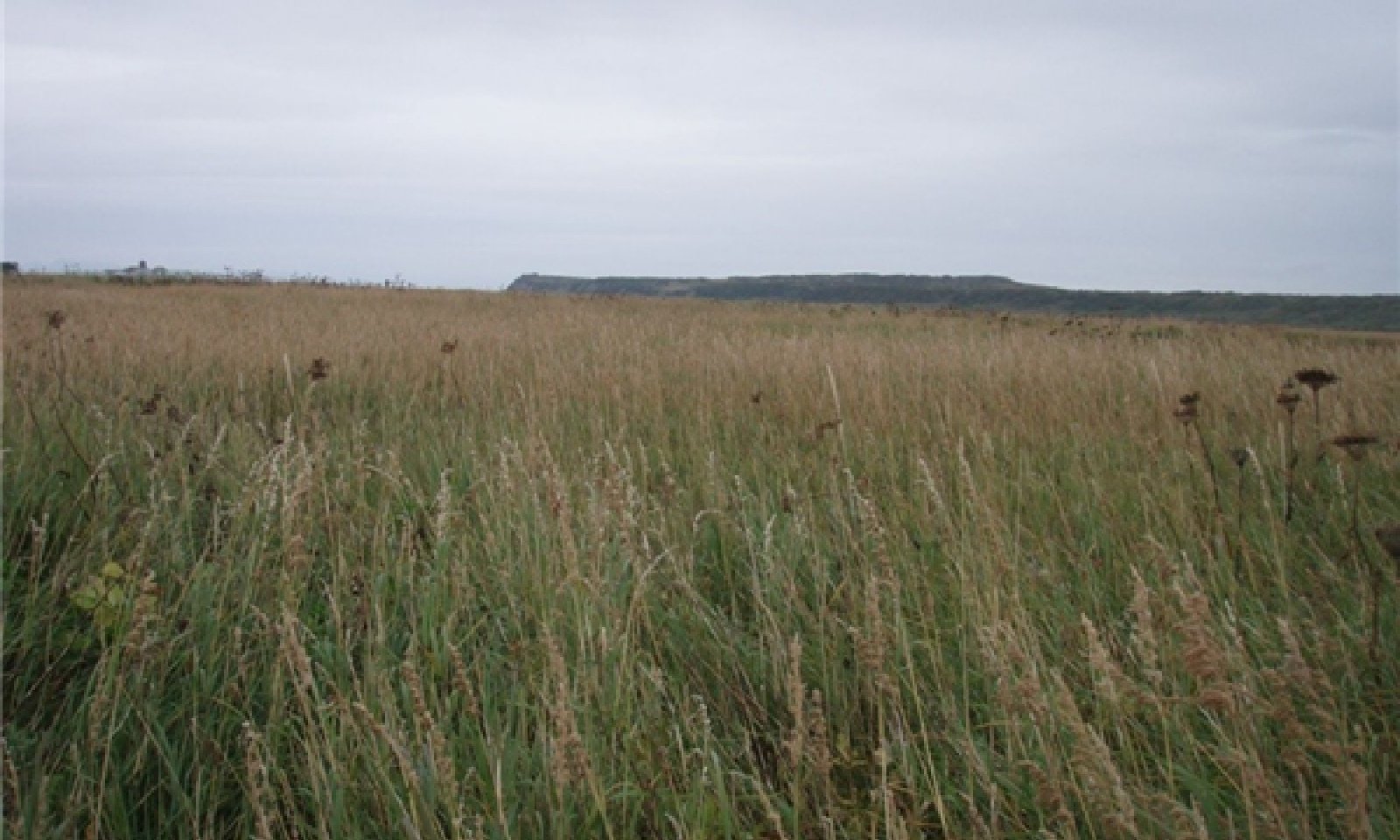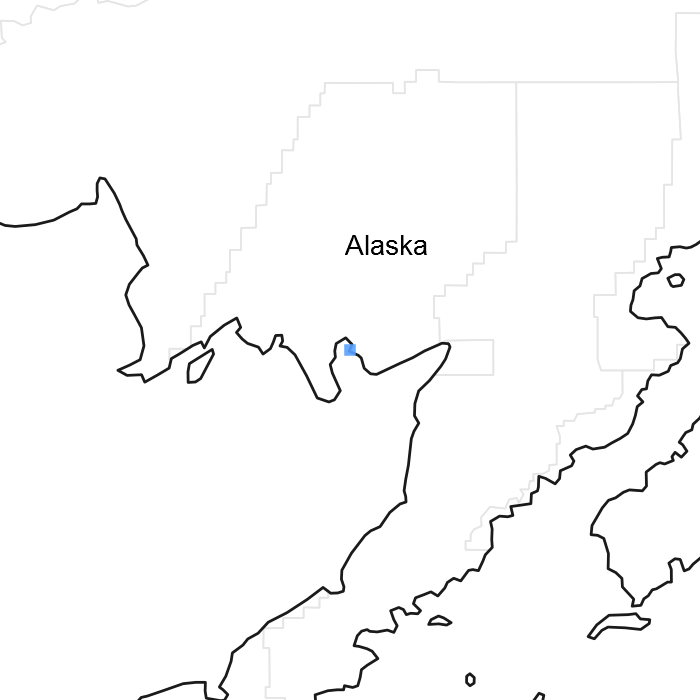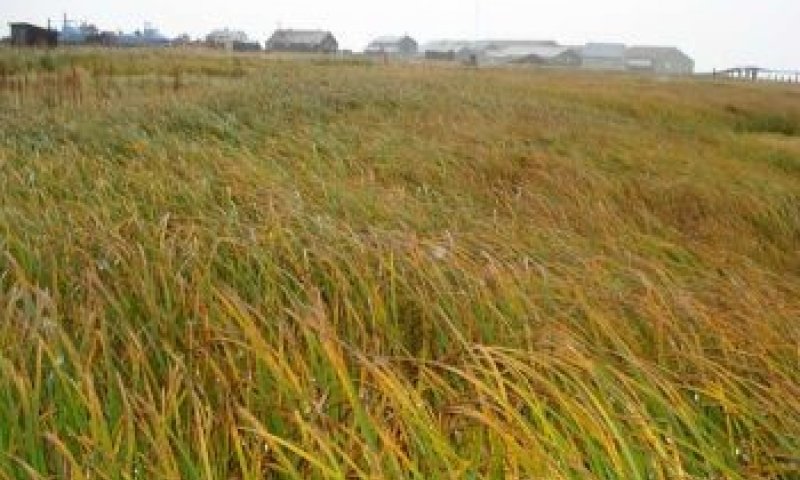

Natural Resources
Conservation Service
Ecological site R236XY170AK
Subarctic Graminoid Loamy Coastal Plain Rises
Last updated: 2/13/2024
Accessed: 12/21/2025
General information
Provisional. A provisional ecological site description has undergone quality control and quality assurance review. It contains a working state and transition model and enough information to identify the ecological site.

Figure 1. Mapped extent
Areas shown in blue indicate the maximum mapped extent of this ecological site. Other ecological sites likely occur within the highlighted areas. It is also possible for this ecological site to occur outside of highlighted areas if detailed soil survey has not been completed or recently updated.
MLRA notes
Major Land Resource Area (MLRA): 236X–Bristol Bay-Northern Alaska Peninsula Lowlands
The Bristol Bay-Northern Alaska Peninsula Lowland Major Land Resource Area (MLRA 236) is located in Western Alaska. This MLRA covers approximately 19,500 square miles and is defined by an expanse of nearly level to rolling lowlands, uplands and low to moderate hills bordered by long, mountain footslopes. Major rivers include the Egegik, Mulchatna, Naknek, Nushagak, and Wood River. MLRA 236 is in the zone of discontinuous permafrost. It is primarily in areas with finer textured soils on terraces, rolling uplands and footslopes. This MLRA was glaciated during the early to middle Pleistocene. Moraine and glaciofluvial deposits cover around sixty percent of the MLRA. Alluvium and coastal deposits make up a large portion of the remaining area (Kautz et al., 2012; USDA, 2006).
Climate patterns across this MLRA shift as one moves away from the coast. A maritime climate is prominent along the coast, while continental weather, commonly associated with Interior Alaska, is more influential inland. Across the MLRA, summers are general short and warm while winters are long and cold. Mean annual precipitation is 13 to 50 inches, with increased precipitation at higher elevations and areas away from the coast. Mean annual temperatures is between 30 and 36 degrees F (USDA, 2006).
The Bristol Bay-Northern Alaska Peninsula MLRA is principally undeveloped wilderness. Federally managed land includes parts of the Katmai and Aniakchak National Parks, and the Alaska Peninsula, Becharof, Togiak and Alaska Maritime National Wildlife Refuges. The MLRA is sparsely populated. Principal communities include Dillingham, Naknek, and King Salmon. Commercial fishing in Bristol Bay and the Bering Sea comprises a major part of economic activity in the MLRA. Other land uses include subsistence activities (fishing, hunting, and gathering) and sport hunting and fishing (USDA, 2006).
Ecological site concept
This lowland ecological site is on rises of coastal plains. Site elevation is between sea level and 50 feet. Slopes are nearly level (0 – 3 percent). Soil development, acidity, salt spray and a flooding regime shape the vegetation on this landform. Soils are young and acidic with low nutrient levels and low available water capacity. Coastal flooding of brackish water and salt spray further restrict vegetation. Lower areas are often scoured by flooding events creating concave areas where hydrophytic vegetation is selected for.
The reference state supports two communities. The reference plant community is characterized as a herbaceous graminoid grassland (Viereck et al., 1992). It is composed of salt-tolerant grasses and forbs common to coastal beaches in southwest Alaska.
Associated sites
| R236XY129AK |
Subarctic Low Scrub Peat Coastal Plains R236XY129AK is a scrubland site on coastal plains. Site hydrology, including differences in flooding and ponding disturbances, does not influence the vegetation here as much as it does in R236XY170AK. |
|---|
Similar sites
| R236XY133AK |
Subarctic Graminoid Loamy Tidal Coastal Plains Both sites are graminoid communities on the coastal plain. R236XY133AK is associated with very poorly drained soils susceptible to coastal flooding and ponding. Hydrologic pressure creates a community comprised primarily of facultative wet to obligate wetland species. While both sites feature a graminoid meadow, the plants and underlying ecological processes are different in these sites. |
|---|
Table 1. Dominant plant species
| Tree |
Not specified |
|---|---|
| Shrub |
Not specified |
| Herbaceous |
(1) Calamagrostis canadensis |
Click on box and path labels to scroll to the respective text.
Ecosystem states
State 1 submodel, plant communities
| 1.1a | - | Flooding. |
|---|---|---|
| 1.2a | - | Site stabilization and relative elevation increase |



